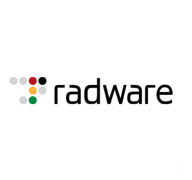


Radware Alteon and Azure Web Application Firewall compete in the application delivery and web security categories. Radware Alteon appears to have the upper hand in integrated application protection and load balancing, while Azure WAF excels in ease of deployment and integration with Azure services.
Features: Radware Alteon provides extensive application delivery capabilities with load balancing, SSL-TLS acceleration, and integrated security enhancements, offering a robust ADC solution with functionalities like reverse proxy and global load balancing. Azure Web Application Firewall focuses on seamless integration within the Azure ecosystem, allowing users to create custom security rules effectively and benefiting from fast deployment and cost flexibility.
Room for Improvement: Radware Alteon could benefit from enhancements in automation and live traffic monitoring, alongside more intuitive integration and reporting capabilities. Users suggest refining TLS support during migrations and improving customer support across different time zones. Azure WAF users recommend improving documentation for deployments and configurations, and some note the need for better mid-tier pricing options and expanded community support.
Ease of Deployment and Customer Service: Radware Alteon is primarily deployed on-premises or in hybrid cloud settings, offering stability and customization for existing infrastructures with generally knowledgeable technical support. Azure Web Application Firewall provides flexibility with public and private cloud deployments, known for straightforward cloud deployment and reliable technical support, though faster response times could enhance the user experience.
Pricing and ROI: Radware Alteon is considered budget-friendly with flexible licensing models accommodating various organizational needs, providing positive ROI through stability improvements. Azure WAF's competitive pricing is noted for its flexible, scalable licensing options, with costs aligning well with its feature set and integration within the Azure ecosystem, resulting in a reasonable ROI for many users.
WordPress security can be tricky, and that's where Cloudflare can be absolutely helpful for small businesses.
For the small project I was working on, using the basic tier provided a huge improvement at zero cost.
In terms of return on investment with Cloudflare, it costs my time to set them up, but basically once they're set up, it's done.
Recently, they have been under serious attack with major exploits, such as Log4j, affecting Fortinet and Palo Alto, and even Cisco and VMware.
AI-based recommendations save on time and money.
This would help us address issues promptly, especially during unforeseen events like DDoS attacks.
Cloudflare does not offer hands-on technical support to fix customer problems but rather a self-service model.
I would rate the technical support with Cloudflare as excellent every time I've had to call them.
They are good at troubleshooting and configuring things.
I am very satisfied with the response from Microsoft dedicated architects if it happens that I have to call for their support.
I reached out to their support, and they helped me resolve the issue effectively.
We never face support issues, and their team resolves any critical issues quickly once they are involved.
There is a dedicated expert answering even the toughest questions.
The customer service and support are excellent.
It is a SaaS tool, but the fact that they have workloads deployed across the world proves that it is a highly scalable tool.
The tool offers very good performance, even during high-traffic periods.
I rate the solution’s scalability an eight out of ten.
Some Azure applications, like the web application firewall, require a certain level of SKU for hosting setup.
For our company, Azure Web Application Firewall works effectively for scalability.
It handles peak loads and thousands of concurrent connections without exceeding 10% utilization.
We have it deployed across multiple geographic locations, benefiting from load balancing resiliency.
I would rate it a nine out of ten for scalability.
For DDoS protection, I would not recommend Cloudflare.
I rate the solution’s stability an eight out of ten.
The service is very stable with no impacts during high-traffic periods.
Very rarely do I see any latency issues.
We've never faced downtime, even during peak transaction hours.
There is minimal downtime, and the solution is quite stable.
There's a need for improvement in areas like AI-based DDoS attacks and Layer 7 WAF features.
Despite these challenges, overall, Cloudflare remains the preferred solution compared to Azure, AWS CloudFront, and Google Cloud Armor.
Areas like how assessment, discovery, and payload are dealt with and how it all comes into your organization can be considered when trying to make suggestions to Cloudflare for improvements.
Upgrading the platform regularly is necessary for security, however, frequent updates every six months or year from Azure can be a maintenance overhead.
The pricing needs improvement, and I think for beginners it will be a little bit complicated, so the ease of use could be enhanced.
They keep integrating new features that sometimes break our production, but we use clustered systems, so we can test those software releases.
Other OEMs offer free courses and hands-on labs on new technologies and features, which we find useful.
Integration with cloud services could be improved.
That's where Cloudflare shines for smaller businesses – it's ten times cheaper than Akamai.
I find it to be cheap.
The pricing for the service is reasonable, neither excessively cheap nor prohibitively expensive.
It is even a lower cost compared to AWS and GCP.
Sometimes, when opting for a higher SKU, it's not the WAF itself that's costly but the additional requirements.
I would place Azure Web Application Firewall at an eight on a scale from one to 10, with one being cheap and 10 being expensive.
For our solution, it was right in the middle of price performance.
The cost of the Radware solution is reasonable and stable.
The implementation and running costs are quite high.
The most valuable features of the solution are performance and security.
Techniques like minification and image compression reduce the size of assets, leading to better performance and faster user load times.
The solution has been able to compare it to the market, and I think the product has taken great strides in automating quite a bit of things, and they use a lot of AI.
With Microsoft, everything is within a single suite, making it easier to configure and plan.
It is almost impossible to access these assets from outside, requiring a very skilled attacker to obtain asset tokens of a customer using Azure.
It integrates effectively with things such as Sentinel and Defender for Cloud, so mostly it's the analytics and now the AI capabilities that have been introduced with Co-pilot.
The product allows us to manage multiple networks and VLANs into a single box and add numerous web services and farms efficiently.
I find the best features to be the flexibility and ease of use.
The most valuable features include the availability with an optional high-availability mode ensuring service continuity because of the resiliency.



| Company Size | Count |
|---|---|
| Small Business | 46 |
| Midsize Enterprise | 8 |
| Large Enterprise | 25 |
| Company Size | Count |
|---|---|
| Small Business | 6 |
| Large Enterprise | 12 |
| Company Size | Count |
|---|---|
| Small Business | 17 |
| Midsize Enterprise | 17 |
| Large Enterprise | 21 |
Cloudflare is a highly-regarded Content Delivery Network (CDN) and a Distributed Denial-of-Service (DDoS) protection solution. The robust global connectivity cloud platform that is Cloudflare ensures users are able to connect to the Internet quickly, securely, and reliably. Cloudflare is one of the world's largest networks in the marketplace today. Using Cloudflare, businesses, educational entities, NGOs, vloggers, bloggers, and anyone else with an internet presence can experience more secure, faster websites and applications.
Currently, there are millions of Internet locations on Cloudflare, and the Cloudflare network
continues to grow every day by the thousands. The solution is able to fulfill the requests for
millions of websites seamlessly and serves on average 45 million HTTP requests per second.
Cloudflare has safe, secure data centers in close to 300 cities worldwide to ensure every
client request is filled as quickly as possible. It is Cloudflare’s edge network that makes this
possible by keeping content and other services as close to each client as possible, so the
information requests are always only seconds away.
Many organizations that work in democracy, civil society, human rights, or the arts are able to
access Cloudflare's highest levels of protection for free via Project Galileo. Additionally, official
election websites can be secured from hacking and fraud through Cloudflare’s Project
Athenian, also at no additional cost.
Cloudflare can also help organizations of all sizes develop a robust zero-trust strategy to
ensure the highest levels of productivity and profitability. Employees, stakeholders, and end users have a greater level of satisfaction and overall improved user experience, which can, in
turn, result in higher revenues and overall ROI. Zero-trust and BYOD (bring your own device)
access ensure end users and employees always have the best resources and technology
available to them at all times.
Cloudflare benefits
Cloudflare has many benefits. Some of its most valuable benefits include:
- Faster load times
- Robust DNS security
- Intuitive cloud Web Application Firewall (WAF)
- Free universal SSL
- Image enhancement
- Automatic browser caching
- Next-generation cloud load balancer
- Accelerated Mobile Pages (AMP)
- Rate limiting
- Minification
- Zero-trust capabilities
- Cost-effective
- Reduced carbon footprint
Reviews from real users
“Many websites require an SSL certificate because they sell stuff and want SSL. Cloudflare
comes with an SSL certificate built in. It's automatic. You sign yourself up for Cloudflare, and
an SSL certificate automatically protects your website. If you have a connection between your
website and your host, the server, Cloudflare, and the host, you don't necessarily need a
certificate.” Spencer M., Owner at Tech Exchange
“What I like best about Cloudflare is that my company can use it to trace and manage
applications and monitor traffic. The solution tells you if there's a spike in traffic. Cloudflare
also sends you a link to check your equipment and deployment and track it through peering,
so it's a valuable tool.” Daniel P., Network Engineer at Ufinet
“The most valuable feature of Cloudflare is the GUI. You are able to control the solution very
well through the interface. There is a lot of functionality that is embedded in the service.” PeerSpot user, Competence Center Manager at a tech services company
Azure Web Application Firewall (WAF) provides centralized protection of your web applications from common exploits and vulnerabilities. Web applications are increasingly targeted by malicious attacks that exploit commonly known vulnerabilities. SQL injection and cross-site scripting are among the most common attacks.
To learn more about our solution, ask questions, and share feedback, join our Microsoft Security, Compliance and Identity Community.
Radware Alteon is an application delivery controller (ADC) solution that provides global load balancing for all web, cloud and mobile-based applications. The solution is designed to help your organization simplify operations while ensuring resilience and SLA. It manages application traffic across both data and cloud center locations, optimizing availability and performance. In addition, Radware Alteon integrates multiple application protection services to provide protection against an array of cyberthreats.
Radware Alteon Features
Radware Alteon has many valuable key features. Some of the most useful ones include:
Radware Alteon Benefits
There are many benefits to implementing Radware Alteon. Some of the biggest advantages the solution offers include:
Reviews from Real Users
Below are some reviews and helpful feedback written by PeerSpot users currently using the solution.
PeerSpot reviewer Jefe de implementaciones de Datos at RETO Industrial S.A. de. C.V., mentions, “The simple and well-documented configuration allows us to be able to implement new balancing services at the request of the user with the same conditions and good service that they expect. We can also make changes to services that are already running, as I mentioned before, the graphical interface is very intuitive and you can almost always make the most common changes quickly. Radware has been characterized by being extremely robust. This gives us the confidence to offer our users a continuous service.”
A director of consulting says, “The most valuable features are the load-balancing and reverse proxy. Global-load balancing as well is valuable. I also find it to be stable. To date, we have not had any issues with it.”
An SOC Specialist at a tech services company explains, “The interface is easy, it's friendly, and has good alerting. When you have a problem with a server, it will alert you. It is useful in many areas, especially for web applications and load balancing. It's something that the customer can see on the internet.”
We monitor all Web Application Firewall (WAF) reviews to prevent fraudulent reviews and keep review quality high. We do not post reviews by company employees or direct competitors. We validate each review for authenticity via cross-reference with LinkedIn, and personal follow-up with the reviewer when necessary.